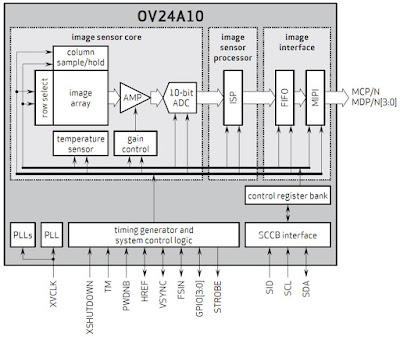PRNewswire: OmniVision introduced the 1/2.8-inch 24MP OV24A family, built on the PureCel Plus stacked die architecture. These are OmniVision’s first 0.9um pixel sensors for smartphone applications. The PureCel Plus stacked die 0.9um pixel leverages multiple generations of pixel technologies to match the latest 1.0um pixel QE.
The OV24A sensor family consists of three products: the OV24A1Q, OV24A1B and OV24A10. All three versions of the OV24A sensors can support PDAF. The OV24A1Q, with its unique 4-cell color filter pattern, is ideal for front-facing camera applications. This sensor has an on-chip, in-pixel binning feature that captures four times more light photons than a regular 0.9um pixel for better image quality in low-light conditions. Additionally, an application can recover an image to full 24Mp resolution, when paired with OmniVision’s software.
The OV24A1B (monochrome) and OV24A10 (Bayer) are used for main-camera and/or dual-camera configurations, enabling zoom and Bokeh features, and improved low-light performance.
Additionally, increasing image quality for the rear-facing main smartphone camera remains of the utmost importance to most consumers. When it is paired in a dual-camera configuration, the OV24A10 and/or OV24A1B sensors’ 24Mp resolution provides a higher zoom ratio, portrait mode effect, and higher quality still images and video in low light.
The OV24A1Q and OV24A10 provide HDR for still images, as well as HDR video with full resolution at 30fps.
Recent studies have predicted that millennials will take over 25,000 selfies during their lifetime. Image quality is becoming an increasingly important factor in this demographic’s smartphone buying decisions. “Smartphone image quality is essential to many consumers, and social media has particularly inspired millennials to make good use of high-resolution front-facing cameras,” said James Liu, product marketing manager at OmniVision. “Our OV24A image sensor family was developed to address the needs of these savvy consumers, who expect the highest quality stills and videos from their smartphones.”


I am not sure why Sensor manufacturers aren't targeting Atleast 60fps @ Full Res, to improve photo quality on smartphone. Since smartphones like the Pixel combine information from upto 10 photos to create a single image with much greater dynamic range and detail (and sharpness).
ReplyDelete